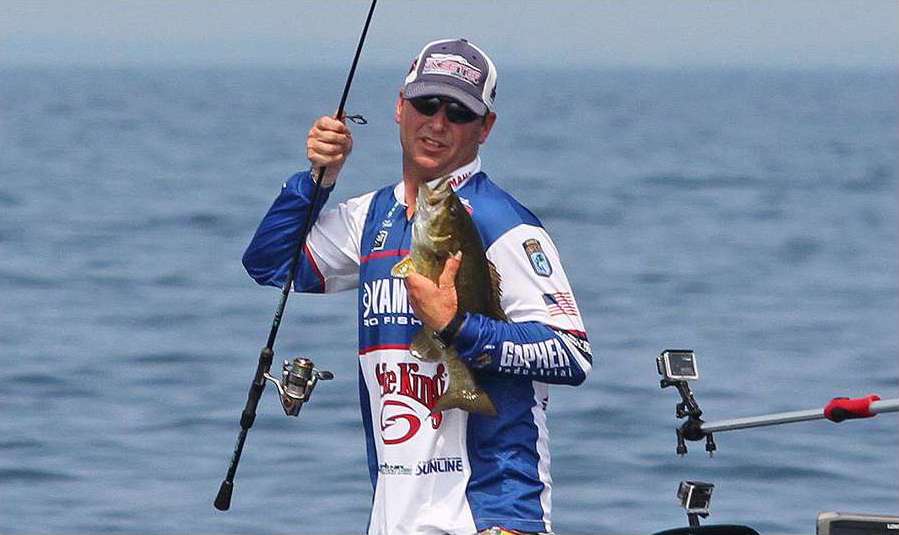
There’s a theme running through the lure patterns of all five top finishers in the Plano Bassmaster Elite at Lake St. Clair. Smallmouth bass are notorious nomads. They’re here one day and gone the next. So understanding where the fish moved from day-to-day and even hour-to-hour was the biggest key to success.
There were also some interesting lure choices among the Top 5, even for Great Lakes fisheries where some form of soft plastic drop-shot bait almost always dominates. The drop shot baits are usually as much on the personal preferences of each angler than anything dictated by what the bass prefer. But certain crankbaits and swimbaits played an important role in some of the success stories at Lake St. Clair.
5th place, Greg Vinson, 76-4
Vinson proved to be the most consistent angler in the Top 12 . His daily five-bass limits varied less than a pound through the four-day tournament, ranging from a high of 19-9 on Day 2 to a low of 18-11 on Day 4. He caught most of his fish drop-shotting a 4-inch Jackall Cross Tail Shad.
But two other lures were important, particularly a Rapala DT 10 crankbait. It helped him locate fish in practice, when high winds made locating fish difficult, and it became a factor during the tournament.
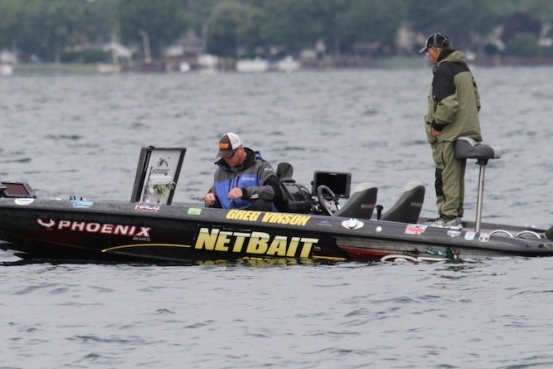
“I was catching some real nice fish on it in practice,” Vinson said. “But the better percentage of them were hooked outside the mouth.”
A state law, designed to eliminate snagging of spawning fish, like salmon, was enforced by B.A.S.S. for this tournament.
After what he’d seen in practice, Vinson was reluctant to use the crankbait in the tournament. “Finally, out of desperation on the first day, instead of not getting bit, I started throwing it,” he said. “I guess because the sun came out and the wind let up, none of the fish I needed were hooked outside the mouth. That was a real blessing because that bait probably separated me from the biggest part of the pack.”
Vinson also caught a couple of key fish on 1/4- and 1/2-ounce prototype swim jigheads paired with a 4-inch paddle-tail swimbait in a “neutral, shad pattern.”
Vinson didn’t burn much gas last week. He stayed in the Mile Roads section of Lake St. Clair, just south of the Metropark weigh-in/takeoff site, and he never saw another angler all week.
“I was fishing scattered weed clumps in a half-mile section of the lake,” Vinson said. “Some were in 18 feet, and others were in the 13- to 14-foot range. I really had to adjust the casting angle each day with the wind. I could move to the windward side of those weed clumps and catch them each day.
“That was pretty neat. That’s been one of my hiccups in smallmouth fishing because they move so much. That was big for me, being able to keep up with them, because they did move. Past experience taught me how to adjust.
“I think it starts with the plankton. The wind moves it around and everything else follows.”
4th place, Chad Pipkens, 77-2
Pipkens thought he would be able to duplicate the success he had last September, when he won the Bass Pro Shops Northern Open at Lake St. Clair with a three-day total of 67-4. He made the long run down the Detroit River to Lake Erie to do so.
Pipkens won that event on a Damiki DC 300 crankbait. A practice day before the Elite Series tourney confirmed the fish were still there, just off the north (Canadian) shore.
“I thought I was going to crush them on that DC 300, just like I did in the Open,” Pipkens said. “In practice I didn’t catch fish as big as I did in the Open, but I was catching fish after fish. All of them were 2 1/2 to 4 pounds. I caught a 6- and a 7-pound walleye. And everything was coughing up 3- to 4-inch shad. I thought it was going to happen.
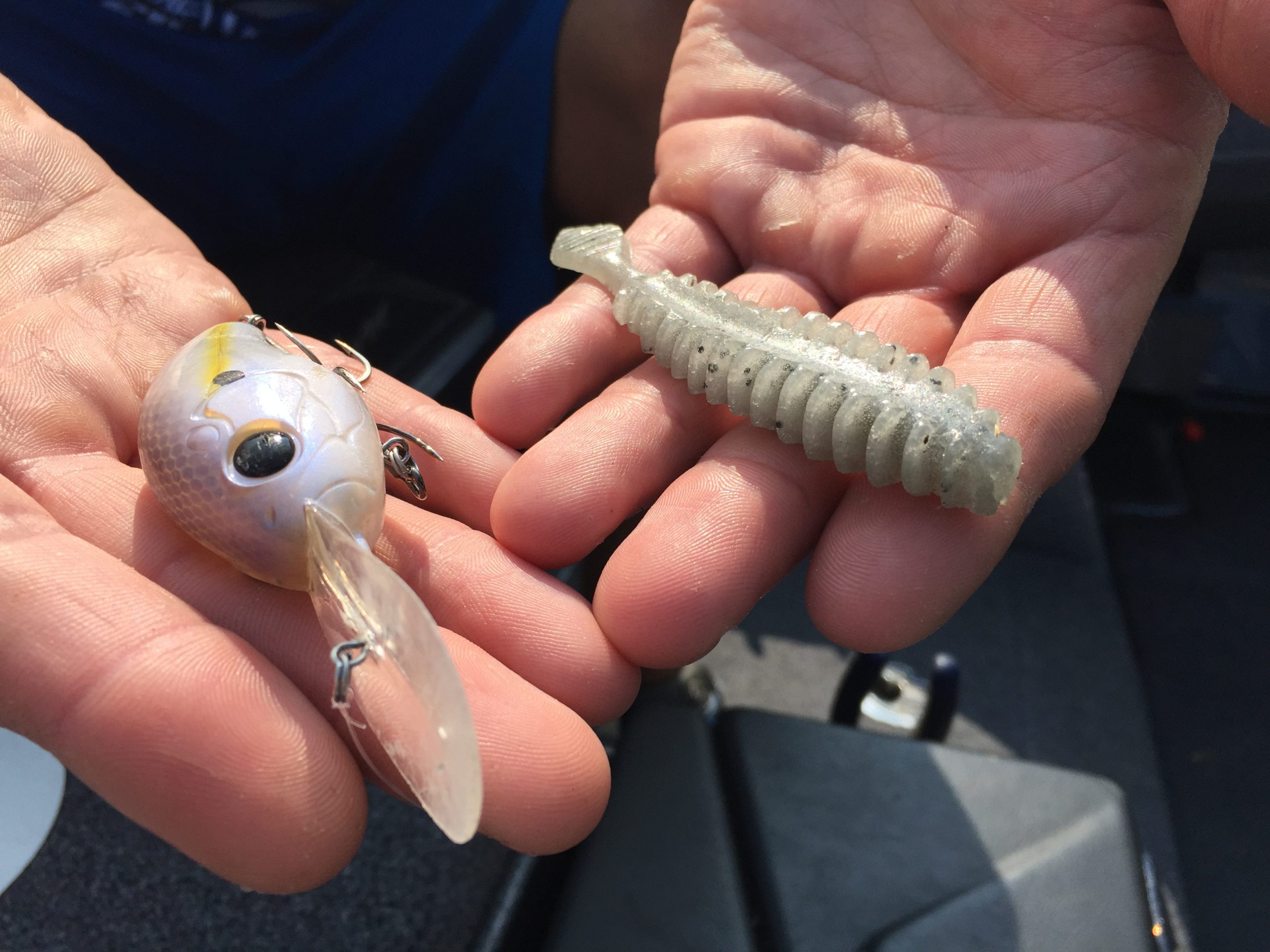
“At 10 o’clock on the first day of the tournament, I’d caught one big one on the crankbait, then nothing.”
That’s when Pipkens made an adjustment and started drop-shotting a Poor Boys Baits Erie Darter in smoke-pepper and stone colors.
“That’s how I caught all my fish the rest of the tournament,” he said.
Mostly he used a 3/8ths-ounce drop shot weight. He switched to a half-ounce when the wind kicked up. He was fishing in depths of 28 to 30 feet.
“It’s not like at St. Clair, where you need to go to a quarter-ounce,” Pipkens said. “You want to get it down there quick. These fish aren’t relating to grass, they relate to the bottom. The last day, when they were really biting, I’d just open my bail, let it drop to the bottom and move it, or they’d already have it before I moved it.”
In continuing the theme of the top finishers, Pipkens said, “These fish are way more wind and current driven than most people realize. Even out there on the lake, where you don’t think there’s current, there’s current. When the wind changes, the fish reposition.”
Pipkens struggled to fill out an 18-2 limit on Day 1. But on Day 2, he had a big bag early, which allowed him to “practice” and expand the area he was fishing.
“The key here is to get in the right section where you think the fish are,” Pipkens said. “You can’t depend on one spot here and another spot eight miles away. You need to have a lot of things in the same area. Most of the places where I caught them in the tournament, I didn’t catch them in practice.
“It’s funny how it works out. I wasn’t going down there (to Lake Erie) unless I caught ‘em cranking.”
But after the crankbait convinced him to go there, it was drop-shotting that produced his fourth-place total.
3rd place, Chris Lane, 77-8
Lane won the Elite Series tournament two years ago at St. Clair. He fished near the mouth of Lake Huron, where all the big bags were caught on Days 1 and 2 this year. But Lane figured out a better plan as the tournament progressed this year. It centered on a Keitech Swing Impact FAT 3.8-inch swimbait in the Anchor Bay area of Lake St. Clair. Lane caught a few fish drop shotting, but it was the swimbait that produced most of his weight, including the 24-pound big bag of the tournament on Saturday.
“(On Thursday) I ran all the way up the (St. Clair) river, caught about 12 or 13 pounds and came back down (to Anchor Bay),” Lane said. “With about an hour-and-a-half left, I caught two 4 1/2-pounders.”
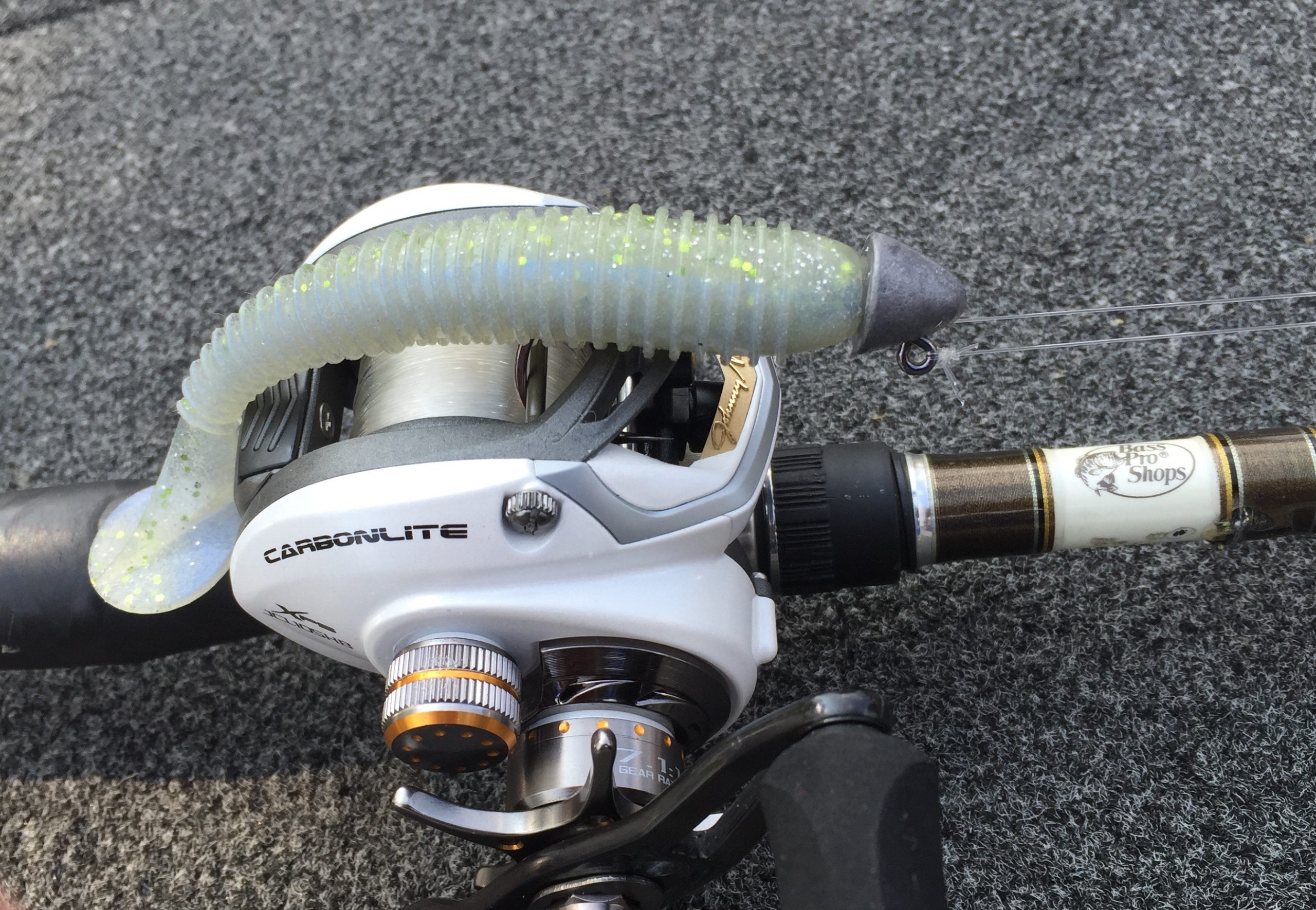
Lane was in 30th place after two days, but he’d made a key adjustment during the tournament after losing several “really good fish.” He was making long casts – as far as he could throw the swimbait on a 3/8ths-ounce swim jighead on 12-pound test Stren fluorocarbon, so he switched from a 7-foot rod to a 7-3 rod and changed from a 6.4:1 retrieve baitcaster to a 7.1:1 retrieve.
“I wasn’t getting a good hook in them,” Lane said. “So I went to that longer rod and it seemed to make a difference. I was making really long casts, and when you’ve got that much line out, you’ve really got to hit ‘em hard.”
Lane was fishing in about 12 feet of water. Basically it was a big grass flat.
“I was just steady reeling, just ticking the tops of the grass,” he said. “I went fun-fishing Saturday. I drifted over some trails and waypoints. As long as there was grass, I thought I could get a bite.”
Lane couldn’t match the 24-pound bag on Sunday, when Anchor Bay turned into a choppy sea due to all the boat traffic. But he still caught 19-2, his second-best total in four days, to take third place.
2nd place, Brandon Palaniuk, 78-6
Palaniuk’s lure choice in smallmouth waters is no secret: a Berkley PowerBait Twitch Tail Minnow (green pumpkin), soaked in Berkley Gulp Alive Marinade (shad scent), on a drop shot.
“It’s like crack for smallmouth,” as Palaniuk often says.
After two days, that appeared to be the case. Palaniuk had the lead and had caught the big bass both days – a 6-3 on Day 1 and a 5-11 on Day 2. But the hotspot south of the Blue Water Bridge, where Lake Huron dumps into the St. Clair River, was starting to cool. Palaniuk still had the lead on Day 3, but his bags weighed less each day, and Todd Faircloth’s were increasing daily.
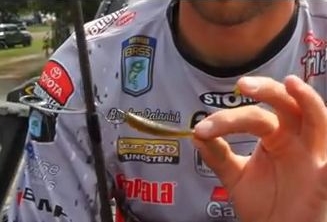
“Every single day I left the docks, I felt like I was going to catch them there,” Palaniuk said. “The first three days I was able to do that. But when I got up there (Sunday), nothing was clicking. It was just a dead sea.”
Palaniuk went back to Lake St. Clair and caught a 4-plus pounder. “Then I think I caught about 40 2-pounders,” he said. “There were all 2 to 2 1/2 pounds.”
Everything he caught all week was on his favorite drop shot rig, which also included a No. 1 VMC drop shot hook and a 3/8ths-ounce Eco Pro tungsten weight, tied about 10 to 12 inches below the hook. Palaniuk used 8-pound test Berkley FireLine braid with a 10-foot, 8-pound test Trilene fluorocarbon leader.
Continuing the theme of smallmouth bass and their nomadic habits, Palaniuk said, “They moved, but I haven’t spent enough time up there to know where they go. A lot of places, I know where they’re coming from and where they’re going to. Here, I just don’t know if they’re in the lake and going down to the river, or if they’re in the river going out to the lake.
“It’s hard to make those adjustments because there’s too much dead water in between to just go searching.
“I really learned a lot about current and how much it has an effect on them. I kind of knew, but this week I got dialed into the wind direction.”
1st place, Todd Faircloth, 84-7
Before the weigh-in started Sunday, Chris Zaldain was backstage, waiting for the festivities to begin. In a casual conversation, Zaldain made a comment that would prove to be prophetic: “Todd Faircloth is probably the best grass flats fisherman on tour. He finds spots that nobody else can find.”
That’s exactly what Faircloth did in rescuing the worst season of his otherwise stellar career with the victory at Lake St. Clair. The $100,000 first place check put him over the $2 million mark for his career, and he will have a chance to continue his streak of nine consecutive Bassmaster Classic appearances, 13 overall.
Faircloth caught all his fish on a drop shot. On Day 1, when the wind was blowing, Faircloth used a 5-inch Arkansas Shiner-colored Strike King Z Too with a 3/8ths-ounce drop shot weight. When the wind slacked the last three days, he went to a Strike King Dream Shot in KVD Magic with a ¼-ounce weight. Both baits were fished on an 8-pound test Sunline fluorocarbon leader attached to 10-pound test Sunline braid.
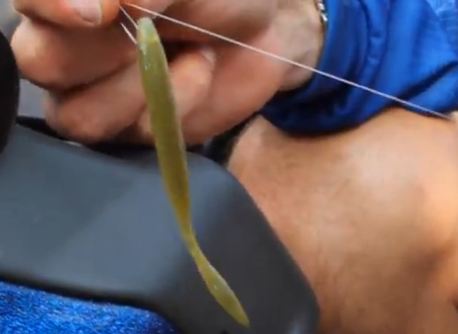
“The bigger bait, I think they could see from a further distance,” Faircloth said. “That was my thought process anyway.”
The victory can be traced back to Faircloth’s Jasper, Texas, roots, when he learned to bass fish on Lake Sam Rayburn and Toledo Bend Reservoir.
“What I learned there is what to look for in grass beds and grass lines,” said Faircloth, who fished a big flat at the south end of Lake St. Clair. “No doubt, I have a good feel for it. I know what to look for whenever I run over it on the depthfinder.
“Fish are going to relate to something different in a grass bed. You’ve got to look for that. You can’t just go out there and fling it around. You’re looking for an inside line or an outside line or a void in the grass bed. If there’s a lot of grass, you want to look for a void. If there’s not much grass, you look for the thickest stuff.”
The key where Faircloth concentrated was taller grass next to clean spots, and he noted, “The clean spots weren’t very big. Some were about the size of a (garbage) dumpster. Some were about the size of this tent (behind the weigh-in stage). And I had one that was a seam that ran (about 20 yards) long.”
Like everyone else, Faircloth knew he had to be prepared for something different every day.
“Instead of just sitting in one spot, I tried to expand my area and go outside of where I’d been catching them, to find stuff for the next day,” he said. “In graphing and fishing around there, I found three or four more spots throughout the tournament that ended up being really key for me.”
Faircloth matched Palaniuk’s big bass from Day 1 with a 6-3 of his own on Day 3. They tied for tournament big bass honors.
“I’d been catching a lot of 3s to 4s, but I hadn’t seen a fish like that,” he said. “Anytime you catch a fish of that caliber, it’s definitely a game-changer.”
And the tournament was a season-changer for the 40-year-old Faircloth, who added, “It turned out to be a pretty good year, instead of a pretty dismal year.”
